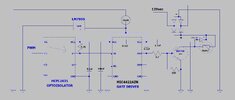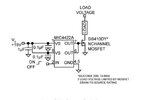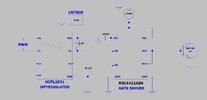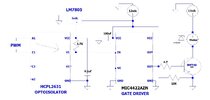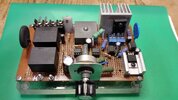I got some really great advice here on building my budget motor controller. It worked , although not perfectly with old, obsolete parts. So it became time to put everything nicely on a board with components you could actually find and I'm back to about 90% working again. On my scope I get a "nice" square wave (4.2vdc) at the opto output / gate driver input with full duty cycle control. At the gate drive output .... not so much. Do I understand correctly that its difficult to get an output on my scope (due to going - neg or to fast or something)?? Surprisingly I get 100+ vdc testing a hand drill or light bulb at the mosfet. But I get no duty cycle control. Everything I tried gets full power. Maybe someone can take a look and tell me where I went wrong again. I believe I have everything correct to this drawing with updated components.
